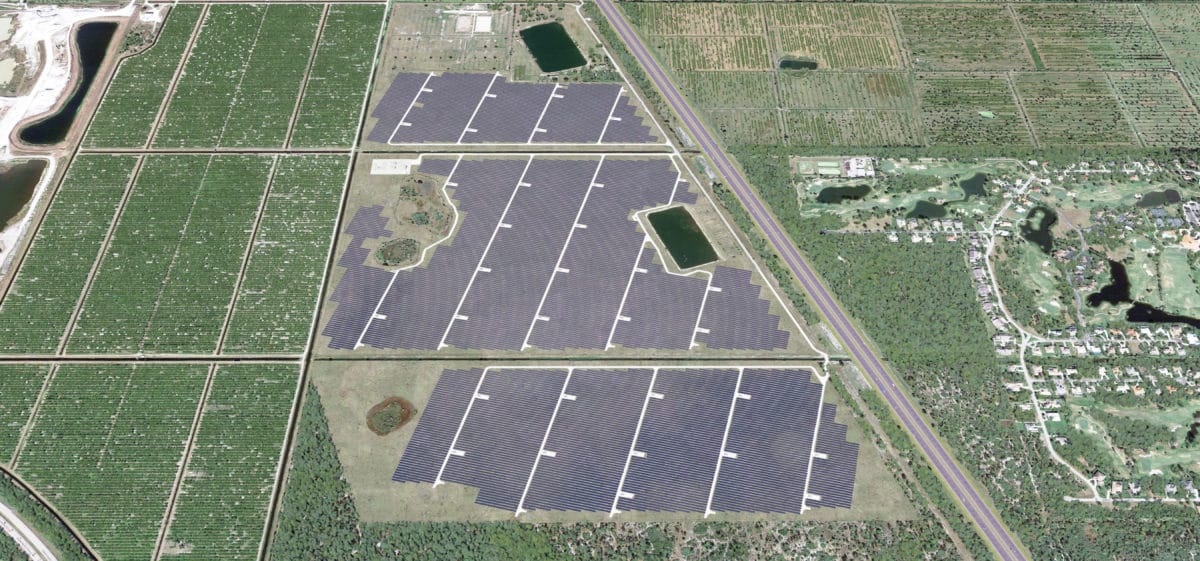The Florida Supreme Court has ruled unanimously, in Florida Industrial Power Users Group v. Julie Imanuel Brown, etc, et al. (video – pdf here), that a decision made by the Florida Public Service Commission (PSC) to approve a base rate adjustment requested by Florida Power and Light to recover costs for the construction of eight solar energy projects was appropriate and proper. The challenge was brought by the Florida Industrial Power Users Group (FIPUG) arguing the PSC’s decision was not prudent because the projects were neither needed nor cost-effective.
A “base rate adjustment” is where the electric utility charges all customers for the costs of project, plus a profit margin (generally around ~10%), on their electric bill.
In 2016, as part of the approval to gain a solar energy base rate adjustment (SoBRA), the PSC authorized FPL to construct up to 300 MWac of new solar generation for each of the four years, 2017 through 2020, of the Rate Settlement period, if FPL satisfies the following requirements:
1. The total costs of the solar projects do not exceed $1,750/kW;
2. The construction, engineering, and component costs are reasonable; and
3. The solar projects are cost-effective additions to FPL’s system.
The court noted that the FIPUG had an opportunity to argue against the 2016 PSC ruling, but chose not to.
Regarding the argument on cost-effectiveness, FPL stated in response to the PSC asking if the above mentioned solar projects were “cost effective”:
Yes. The 2017 and 2018 SoBRA projects are cost-effective and are projected to result in $106 million (CPVRR) of customer savings.
The capital costs were estimated to be $419 million or $1,405/kW for the 2017 projects and $443 million, or $1,485/kW for the 2018 projects. FPL also noted other benefits from the solar power plants like capacity savings, CO2 reductions, etc. The avoided generation cost component considered avoided generation capital, avoided fixed operation and maintenance, avoided transmission interconnection, avoided capital replacement, avoided incremental gas transport, and avoided short-term purchases over the projected 30 year lifetimes.
Regarding whether the solar projects were needed centered on the capacity safety margin being met by FPL, which at the time was approaching the required minimum 20%. The FIPUG argued that new capacity would bring the excess generation on the grid above that requirement, while the PSC contended the value was a minimum – not a cap.
The eight 74.5 MWac projects already built, totaling 596 MWac, are:
- Coral Farms located in Putnam County
- Horizon located in Putnam and Alachua Counties
- Wildflower located in DeSoto County, (iv) Indian River located in Indian River County
- Loggerhead located in St. Lucie County
- Barefoot Bay located in Brevard County
- Hammock located in Hendry County
- Blue Cypress located in Indian River County.
The first four came online in 2017, the remainder in 2018. This and the large-scale solar development activities of the other large utilities in the state – Duke, Tampa Electric and Gulf Power – have pushed Florida to become one of the nation’s biggest solar markets.
This content is protected by copyright and may not be reused. If you want to cooperate with us and would like to reuse some of our content, please contact: editors@pv-magazine.com.








My problem with this is they build it, make ratepayers pay for it plus 10% and they own it!! Shouldn’t the ratepayers own it?
The price isn’t that bad as most are tracking thus 30% higher output
That’s why it’s best to go solar for your home and hedge against rising rates,
If it wasn’t for FPL, little solar would be built! I applaud FPL for delivering cost effective solar to Florida..
Great for the planet! However, individual homeowners in Florida better wake up! Consumers continue to resist the option of generating their own energy independently even though they can install with no upfront cost and pay less for solar than for their current utility rate.
There will no doubt be many who complain about no longer having the 30% tax credit when they failed to take advantage of it while available. Beware! Florida utilities have a cap on the percentage of solar capacity that will be ALLOWED. As THEY fill this with their own systems, ultimately it means that individuals may one day no longer have the option to install their own system.